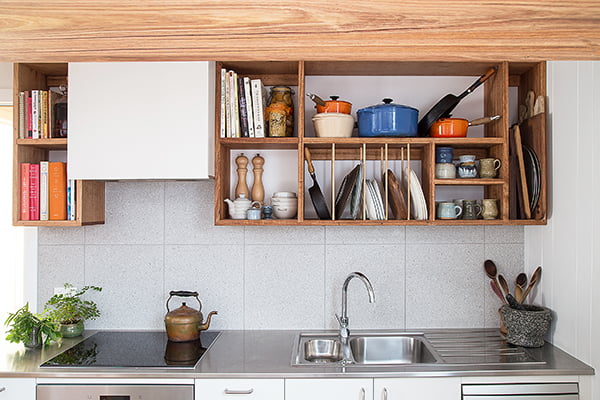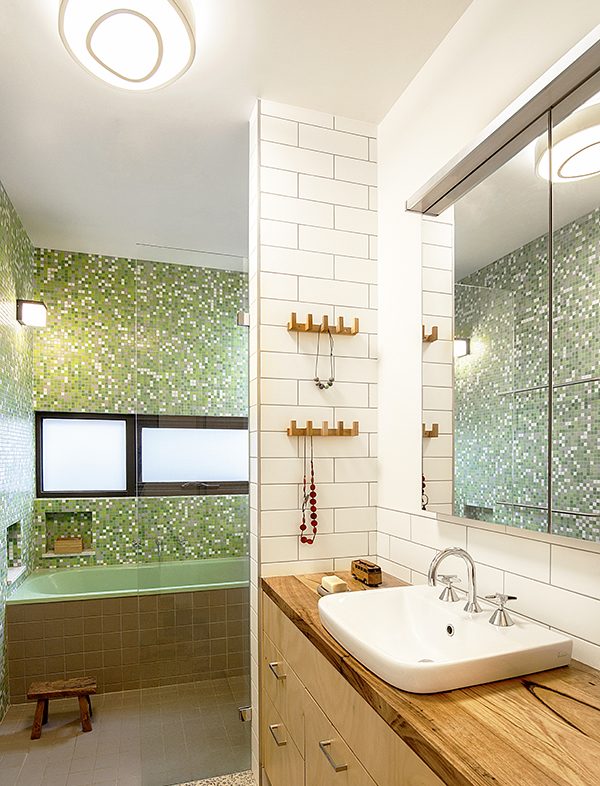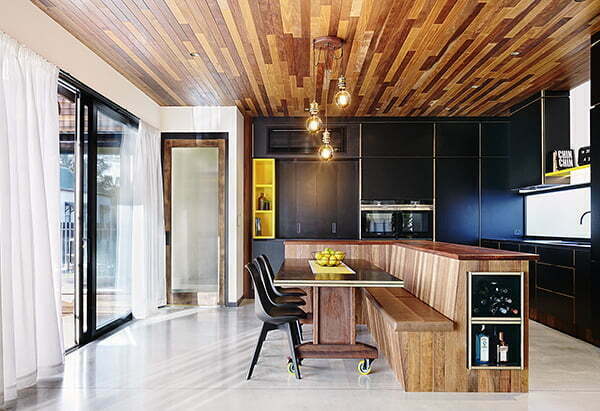Beyond the brand: appliances guide

Are you in the market for a new cooktop, fridge or smaller household appliance? With so much rubbish around, it’s worth doing your homework to get value for money.
Appliance selection can seem simple, but in fact can be a bit of an art form. There are a number of steps, the first of which is to list the requirements of the new appliance. For example, for a fridge you need to know the total volume required, as well as the individual volumes of fridge and freezer sections. You also need to know the maximum dimensions the fridge can be, allowing for the required airspace around it, the basic layout (freezer on top or bottom) and list the features it should have, such as should the freezer have drawers or shelves. And then there’s how much you can spend on your new appliance.
Energy and water consumption
Probably most importantly, you need to consider energy consumption of the appliance. Over the life of an average appliance, the energy use and hence running costs can be considerable. Choosing an appliance based purely on initial purchase price, without considering ongoing running costs, can result in you paying more over its lifespan than if you had bought a more expensive but more efficient model.
Comparing energy consumption between appliances is simple, as many appliances such as fridges, dishwashers and washing machines are required to carry an energy ratings label. The label has two energy usage indicators: the star rating (the more stars, the more efficient the appliance) and the annual energy use in a typical situation (the lower the number, the less energy it uses).
Water consumption also influences energy consumption for appliances that use hot water such as dishwashers, so lower water use is better, provided it doesn’t compromise the appliance’s effectiveness. Appliances will generally have a water ratings label just like an energy rating and you can search www.waterrating.gov.au for the most water-efficient appliance.
Reliability
An appliance isn’t a bargain (and it won’t be an environmentally sound purchase) if it only lasts a few years or requires regular repairs. It’s worth doing research to see how generally reliable a model, range or brand is, and what sort of issues other owners have had with a particular appliance. Product review sites can help with this. Check out Choice, or another popular site is productreview.com.au, where you can type in a model number and see what others have to say about reliability and problems with that particular appliance. Not all appliances are listed, and very new models may have few or no reviews, but often there will be reviews for older, similar appliances that can guide you.
Of course, even the best appliances will have the occasional bad review. Production line manufacturing, even with the highest quality control, can result in a faulty appliance. Don’t necessarily discount an appliance with one or two bad reviews when it has dozens of good ones.
Quality and value for money
Another thing to consider is the quality of an appliance. While the general rule is that more expensive appliances are generally better quality than cheap ones, this rule doesn’t always hold. There have been some expensive appliances that seemed like quality units, but have turned out to have poor efficiency, low reliability and high maintenance costs. The same applies at the other end of the market – cheap doesn’t always mean unreliable and inefficient. If you do your research, you may be able to spend $1000 on your new washing machine and get similar efficiency, ease of use and reliability as a $4000 top-of-the-line machine.
Generally, you will want your appliances to last for as long as possible, to provide the best financial and environmental outcomes, but many, if not most, appliances will need at least a small repair over their lifetime. How much that repair costs depends on the availability and price of replacement parts, so check this. Some expensive appliances can have high spare parts prices and low-volume models may not have parts available. Big Warehouse Spares is a good source of parts for those who want to avoid the repairer’s mark-up.
Recyclability and sustainability
When it comes to appliance recyclability, most people will have to use local facilities such as the local tip (or sometimes scrap metal dealers), most of which will take appliances for recycling, rather than landfill. However, some appliance manufacturers have recycling programs in place and may take your old appliance for recycling. Some appliance repairers and installers will also take old appliances and strip them for the good parts. Recycling options vary enormously from region to region, so check the RecyclingNearYou website for your local recycling options.
When it comes to sustainability of materials, most appliances of a particular category will contain similar quantities of similar materials – all fridges have steel or stainless steel cabinets, copper or aluminium coils and (usually polyurethane) foam for insulation, for instance. There are some areas where appliances will differ, such as the refrigerant used in a fridge, air conditioner or heat pump water heater. You may need to look at datasheets to glean this information, but for air conditioners and heat pump water heaters the refrigerant type is considered a selling point. Look for a refrigerant with a lower global warming potential (GWP). See the relevant Wikipedia page for commonly available refrigerants and their GWP.
Specific appliances
In addition to the general considerations above, here are some points to consider when selecting specific appliances for your kitchen and bathroom.
Dishwashers
- Number of place settings – don’t buy a large machine if there are only two of you – the temptation will be to run it part full.
- Machines that use less water also use less energy to heat that water, but there is a limit on how far you can reduce water use. Some machines with low water use don’t wash well, so check reviews.
- If the racks and slides are cheap plastic, they may break easily, so look for an appliance with robust internals.
- Make sure the filter is easily cleaned – a filter that’s hard to clean tends to get ignored, resulting in a less efficient machine and poor cleaning performance.
Refrigerators
- Select a fridge that suits your needs – too small and it will forever be crammed too tight, resulting in uneven cooling; too large and it will use more energy than required.
- Make sure that door seals are low cost and easy to replace.
- Select a fridge with the most environmentally benign refrigerant that you can get, balancing other requirements.
- Avoid fancy options like icemakers in the door etc; they add cost and complexity and usually increase running costs.
- Always provide plenty of ventilation around the fridge, especially above – a fridge chimney to duct warm air away from the fridge can be built into fridge alcoves when doing renovations.
Ovens and cooktops
- Look for a well-insulated electric oven; gas ovens are likely to be less sustainable, particularly if you’re using GreenPower or solar. Don’t pay extra for features you won’t use, such as rotisseries and the like. It’s just more to break down and can compromise the oven insulation, increasing heat losses.
- If your oven needs are small, consider a combined microwave/convection oven. This reduces energy use and eliminates the materials required to make one of the ovens.
- It’s hard to find ovens without digital controls, which can add to standby power. However, this is less of an issue nowadays as standby power of most appliances has greatly decreased; most draw less than one watt when not in use (a one-watt draw costs less than three dollars a year to run).
- Induction cooktops are efficient and allow fast cooking temperature adjustments. However, if your cooking needs are modest, a simple resistive element cooktop could be a good option – it’s much cheaper, doesn’t use much more electricity and will be much cheaper to repair.
- Whether induction or resistive element, fit a cooktop with a flat glass top. It will be much faster to clean, requiring less effort and little or no cleaning agents.
Small appliances
The first consideration for any small appliance is “Do I need this?” Always look for a model with a good reputation for longevity and reliability. Don’t double up on appliances. For example, if you have a toaster-oven that toasts well, do you need a separate toaster? Eliminating excess appliances not only saves you up front, but gives you back more bench space.
Most of the cheaper small appliances are designed to be non-repairable, although parts are available for some models. Some manufacturers still make devices designed to be fixed. Dualit and Magimix are two examples, and while their appliances are expensive, they generally have a good reputation and most parts are available.
Bathroom appliances
Radiant heat lamps can use considerable energy if used for long periods, so they should not be used for lighting. Look for a combined heat lamp/lighting system that has decent lights that provide the desired lighting levels, to eliminate the temptation to turn on the heat lamps for extra light.
Heated towel rails prevent towels becoming smelly from staying damp, but if run continuously can result in large energy use. A single small 100-watt towel rail will use 2.4kWh a day, or 16.8kWh per week. Over a six-month winter period it would use around 440kWh, or over $120 of electricity.

Warranties
Regardless of the appliance, you want a good warranty. For appliances like fridges, warranties of five years or more are available, but, for small appliances, 12 to 24 months is more likely. A warranty can be an indication of a manufacturer’s faith in its products, so it should be taken into account when selecting a brand/model.
Extended warranties, as offered by some of the large appliance chain stores, may sound like good insurance, but they can be expensive and may not cover all possible faults. They can also be a waste of money if they cover only what you are already covered for under Australian consumer law. See Choice’s extended warranty page for more information.
Materials selection
There is a wide range of materials used in kitchens and bathrooms and it’s not possible to cover them in depth in a short article. In general, look for materials with low toxicity, low or zero-VOCs and low embodied energy. Materials like ceramic tiles have a high-embodied energy, but also have a long service life and can be reused if removed carefully, so this should be taken into account when compared to other materials. For example, timber has a low embodied energy and is biodegradable, but if used in wet areas and for benchtops can have a short service life unless regularly maintained.
Materials that require little or no maintenance can have a lower environmental footprint than those that need regular maintenance. For example, polished stone needs little effort to keep it clean and looking nice, whereas wood needs regular oiling or refinishing. The cost of producing and applying those finishes needs to be included in the equation.

Look for locally produced materials if possible, provided they meet other environmental criteria. Stone quarried 50km away has a lot lower energy footprint than stone quarried and shipped from the other side of the planet.
Especially in wet areas, avoid materials like MDF, chipboard and similar compressed fibreboards for cabinet carcasses. Water quickly damages these sorts of materials unless they are specifically made for damp locations (most grades of compressed fibreboards are not) or have been properly sealed. More resilient materials include marine ply (available in low-VOC E0 versions) and composite materials such as Paperock. While these materials are more expensive initially, they will outlast cheaper materials such as chipboard.
More info on appliances
 Efficient homes
Efficient homes
Building for a changing climate
Are we building homes for the future, or for the past? Rob McLeod investigates how climate change is impacting home energy ratings and the way we build our homes.
Read more Efficient homes
Efficient homes
Gas and our health
Dr Ben Ewald uncovers the health effects of gas in the home.
Read more


